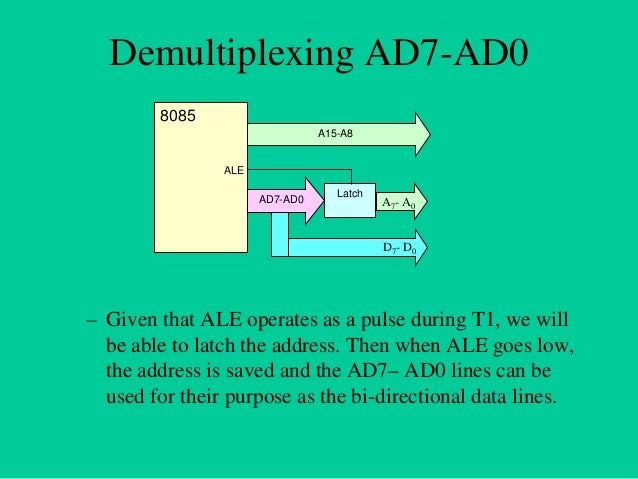Gaonkar Microprocessor 8085

MICROPROCESSOR 8085 • Reference Book: – Ramesh S. Goankar, “Microprocessor Architecture, Programming and Applications with 8085”, 5th Edition. Hp Color Laserjet Cp5525 Printer Driver. Ramesh gaonkar 8085 pdf free download 8085 Microprocessor - Ramesh Gaonkar.pdf Good Application for Engineering. 8085 microprocessor by RAMESH GANOKAR ebook pdf. Sep 26, 2015 Understanding 8085 Microprocessor is first step toward understanding Hardware part of Computer systems. Every Computer science student should have basic. – Each of these patterns forms an instruction for the microprocessor. – The complete set of patterns makes up the microprocessor’s machine language. The 8085 Machine Language • The 8085 (from Intel) is an 8-bit microprocessor. – The 8085 uses a total of 246 bit patterns to form its instruction set.
• 40-pin The Intel 8085 (' eighty-eighty-five') is an produced by and introduced in 1976. It is a software- with the more-famous with only two minor instructions added to support its added interrupt and serial input/output features. However, it requires less support circuitry, allowing simpler and less expensive systems to be built. The '5' in the part number highlighted the fact that the 8085 uses a single +5- (V) power supply by using transistors, rather than requiring the +5 V, −5 V and +12 V supplies needed by the 8080. This capability matched that of the competing, a popular 8080-derived CPU introduced the year before. These processors could be used in computers running the. The 8085 is supplied in a 40-pin package.
To maximise the functions on the available pins, the 8085 uses a multiplexed address/data bus. However, an 8085 circuit requires an 8-bit address latch, so Intel manufactured several support chips with an address latch built in. These include the 8755, with an address latch, 2 KB of EPROM and 16 I/O pins, and the 8155 with 256 bytes of RAM, 22 I/O pins and a 14-bit programmable timer/counter. The multiplexed address/data bus reduced the number of PCB tracks between the 8085 and such memory and I/O chips.
Both the 8080 and the 8085 were eclipsed by the for desktop computers, which took over most of the CP/M computer market, as well as a share of the booming market in the early-to-mid-1980s. The 8085 had a long life as a controller, no doubt thanks to its built-in serial I/O and 5 prioritized interrupts, arguably microcontroller-like features that the Z80 CPU did not have.
Once designed into such products as the controller and the video terminal in the late 1970s, the 8085 served for new production throughout the lifetime of those products. This was typically longer than the product life of desktop computers.
I8085 pinout. The 8085 is a conventional design based on the Intel 8080. Unlike the 8080 it does not multiplex state signals onto the data bus, but the 8-bit is instead multiplexed with the lower 8-bits of the 16-bit to limit the number of pins to 40. State signals are provided by dedicated bus control signal pins and two dedicated bus state ID pins named S0 and S1. Pin 40 is used for the power supply (+5 V) and pin 20 for ground.
Pin 39 is used as the Hold pin. The processor was designed using circuitry, and the later 'H' versions were implemented in Intel's enhanced nMOS process called HMOS ('High-performance MOS'), originally developed for fast static RAM products. Only a single 5 volt power supply is needed, like competing processors and unlike the 8080.
The 8085 uses approximately 6,500. The 8085 incorporates the functions of the 8224 (clock generator) and the 8228 (system controller) on chip, increasing the level of integration. A downside compared to similar contemporary designs (such as the Z80) is the fact that the buses require demultiplexing; however, address latches in the Intel 8155, 8355, and 8755 memory chips allow a direct interface, so an 8085 along with these chips is almost a complete system. The 8085 has extensions to support new interrupts, with three maskable vectored interrupts (RST 7.5, RST 6.5 and RST 5.5), one (TRAP), and one externally serviced interrupt (INTR). Each of these five interrupts has a separate pin on the processor, a feature which permits simple systems to avoid the cost of a separate interrupt controller. The RST 7.5 interrupt is edge triggered (latched), while RST 5.5 and 6.5 are level-sensitive.